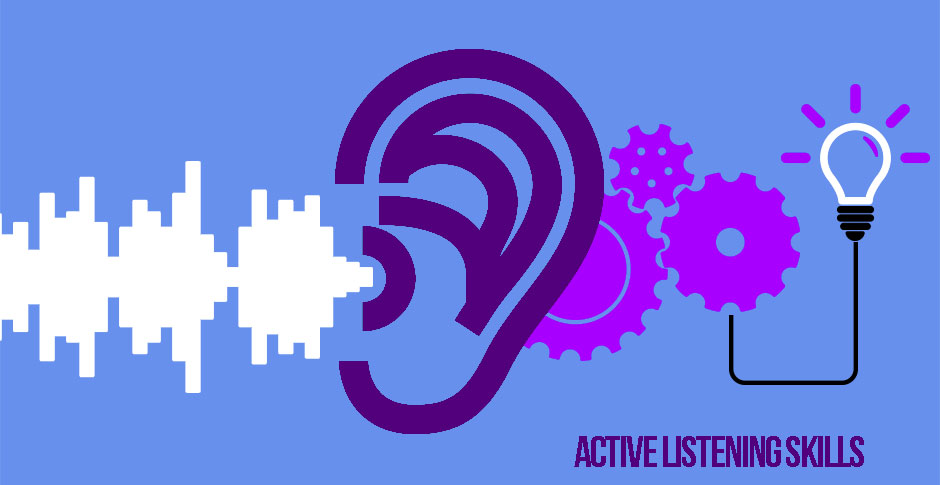

The Power of Active Listening in Coaching with Quinn Vietnam Manpower
- trienkhaiweb
- 6 January, 2025
- 0 Comments
In today’s dynamic business landscape, effective leadership is more crucial than ever. At Quinn Vietnam Manpower, we understand that investing in your employees’ growth is key to organizational success. Coaching plays a vital role in this process, but are your coaching sessions truly impactful? If you find yourself dominating the conversation and not seeing the desired results, it might be time to re-evaluate your approach.
One crucial aspect often overlooked is active listening. It’s not enough to simply deliver information; truly effective coaching requires understanding your employees’ perspectives, challenges, and aspirations. By actively listening, you can foster a more engaging and productive coaching experience, leading to increased employee satisfaction, motivation, and ultimately, better performance.
Quinn Vietnam Manpower recognizes the importance of strong leadership and effective communication in the workplace. We specialize in providing top-tier manpower solutions to businesses across various sectors. Our expertise in talent acquisition and development ensures that you have the right people with the right skills to drive your organization forward.
Active Listening: The Key to Unlocking Potential
Active listening involves more than just hearing words; it’s about truly understanding the message being conveyed. It requires focus, empathy, and a genuine desire to connect with the speaker. In a coaching context, active listening helps build trust, encourages open communication, and enables you to tailor your guidance to the individual needs of your employees.

Three Ways to Enhance Coaching through Active Listening:
- Ask Open-Ended Questions:
Traditional coaching often relies on one-sided communication, where managers deliver instructions and employees passively receive them. However, this approach fails to tap into the valuable insights and perspectives that employees can offer.
By incorporating open-ended questions into your coaching sessions, you can encourage employees to express their thoughts and feelings freely. Instead of simple “yes” or “no” responses, you’ll gain a deeper understanding of their understanding, challenges, and motivations.
Here are some examples of powerful open-ended questions to use in your coaching sessions:
- “What key takeaways resonated most with you from this session?”
- “How can you apply these concepts to your current projects?”
- “What potential roadblocks do you foresee, and how can we address them proactively?”
- “If you were leading this session, what would you do differently?”
These questions stimulate critical thinking, encourage self-reflection, and empower employees to take ownership of their development.
- Suspend Judgment:
One of the biggest obstacles to active listening is our inherent tendency to judge. We often filter information through our own biases and experiences, leading to premature conclusions and assumptions.
To truly listen actively, it’s essential to suspend judgment and approach each coaching session with an open mind. Give your employees the benefit of the doubt, even if their perspectives differ from your own. Focus on understanding their reasoning and motivations before forming any opinions.
For instance, if an employee expresses feeling overwhelmed with their workload, resist the urge to label them as lazy or incompetent. Instead, delve deeper into the root causes of their struggles. Are they lacking certain skills or resources? Are there any underlying personal or professional challenges affecting their performance?
By creating a safe and non-judgmental space, you’ll encourage employees to be honest and vulnerable, leading to more meaningful and productive coaching conversations.
- Pay Attention to Nonverbal Cues:
Communication extends beyond words. Nonverbal cues such as body language, facial expressions, and tone of voice can provide valuable insights into an individual’s thoughts and feelings.
During your coaching sessions, pay close attention to these nonverbal signals. Are your employees engaged and attentive, or do they seem distracted and disengaged? Does their body language convey confidence or anxiety?
By observing these cues, you can gain a more holistic understanding of your employees’ state of mind. This awareness allows you to adjust your communication style, address any underlying concerns, and create a more comfortable and supportive environment.

Quinn Vietnam Manpower: Your Partner in Talent Development
At Quinn Vietnam Manpower, we recognize the importance of active listening in effective coaching. We are committed to providing comprehensive manpower solutions that empower businesses to cultivate a culture of growth and development. Our team of experienced recruiters and HR professionals can help you identify and recruit top talent, as well as provide customized training and development programs to enhance your employees’ skills and performance.
Looking Ahead to 2025:
As we approach 2025, the demand for skilled manpower will continue to grow. Businesses need to invest in their employees’ development to stay competitive and adapt to the evolving market landscape. Quinn Vietnam Manpower is dedicated to helping organizations navigate these challenges by providing tailored manpower solutions that align with their specific needs and goals.
Conclusion:
Active listening is a powerful tool that can transform your coaching sessions from mundane lectures into engaging and impactful dialogues. By asking open-ended questions, suspending judgment, and paying attention to nonverbal cues, you can create a more supportive and empowering environment for your employees.
Quinn Vietnam Manpower is your trusted partner in talent development. Contact us today to learn more about how we can help you build a high-performing team and achieve your business objectives in 2025 and beyond.
Related articles
Breaking Down Silos: How We Can Enhance Cross-Departmental Communication
In today’s dynamic business landscape, effective communication is more critical than ever, especially for organizations like Quinn Vietnam Manpower, operating in the competitive manpower sector. While companies often emphasize teamwork, communication barriers between departments can hinder productivity and efficiency. A 2024 survey revealed that two-thirds of employees believe cross-departmental communication is poor, leading to decreased…
Breaking Down Silos: How We Can Help Your Company Thrive
As businesses navigate the complexities of hypergrowth in 2025, one challenge stands out: information silos. These barriers to communication and collaboration can hinder productivity, stifle innovation, and ultimately impede a company’s success. This article explores the detrimental effects of information silos and how Quinn Vietnam Manpower can provide solutions to foster a more connected and…
Breaking Gender Bias: Quinn Vietnam Manpower’s Guide to Inclusive Recruitment
Gender bias in the workplace remains a persistent challenge, but recruiters have a crucial role to play in building more inclusive environments. Quinn Vietnam Manpower is committed to promoting gender equality in the workplace and offers these seven actionable steps for recruiters to break down barriers and create a truly diverse and inclusive workforce. 1….
Breaking the Ice: How Quinn Vietnam Manpower Can Connect with Shy Clients
In the competitive world of manpower solutions, building strong client relationships is crucial. At Quinn Vietnam Manpower, we understand the importance of open communication and trust. But what happens when a client is shy or hesitant to engage? This can pose a challenge for any business, especially in the manpower sector where understanding client needs…
Breaking the Mold: Why Leaders Need New Decision Models
The business world is in constant flux, and the old ways of doing things simply don’t cut it anymore. This is especially true in today’s rapidly evolving global market, where companies need to be agile and adaptable to stay ahead of the curve. One area where this is particularly evident is in decision-making. Traditional decision…
Bridging Cultural Gaps: Effective Communication Strategies for Global Teams
In today’s interconnected world, businesses increasingly rely on global teams to drive innovation and success. However, effective collaboration in diverse cultural landscapes presents unique communication challenges. Understanding these nuances is crucial for fostering strong relationships, building trust, and ultimately, achieving peak performance. Quinn Vietnam Manpower, a leading provider of manpower solutions, recognizes the significance of…






